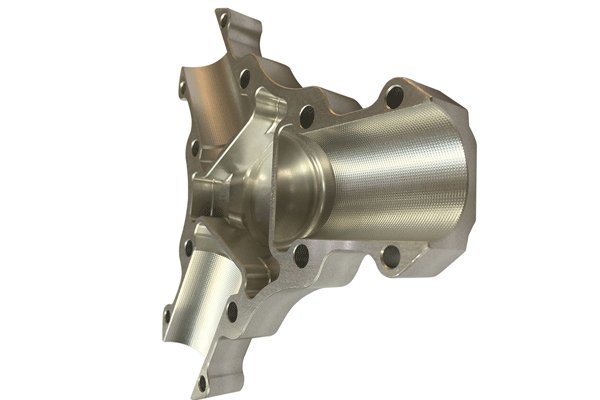Opening
Did you know that approximately 70% of manufacturers are increasingly investing in custom machining solutions to meet the evolving needs of their clients? As industries grow more diverse and competitive, the demand for precision-engineered parts that meet specific operational requirements has surged. This shift highlights a significant challenge faced by CNC (Computer Numerical Control) processing plants: effectively bridging the gap between custom designs and conventional manufacturing processes. In this blog, we will explore how CNC processing plants can navigate this intricate landscape and provide innovative solutions to fulfill both custom and conventional design needs.
to CNC Processing
CNC machining involves the use of computers to control machine tools, enabling the precise cutting, shaping, and finishing of materials. This technology has revolutionized manufacturing by allowing for complex shapes and detailed designs that were once impossible to create with traditional methods. Yet, as the demand for custom manufacturing grows, CNC processing plants face the challenge of adapting their conventional workflows to accommodate personalized design requests.
The Core Challenges of Custom vs. Conventional Designs
Custom designs often feature unique specifications that differ significantly from standard models. This differentiation can lead to complications in the CNC machining process, requiring additional programming, tooling, and machining time.
The variation in materials used for custom parts, ranging from plastics to various metal alloys, poses a challenge. Each material has its own machining characteristics, leading to potential production difficulties.
While conventional designs can be produced in large quantities with predictable turnaround times, custom designs often require lower production runs, making scalability a significant concern.
Ensuring consistent quality across both custom and conventional parts can be burdensome, especially when custom designs require specific tolerances that deviate from typical manufacturing standards.
Strategies for Bridging the Gap
The integration of advanced 3D modeling and simulation software allows CNC processing plants to visualize custom designs before production begins. This technology enables engineers to assess the feasibility of the design, test different machining strategies, and predict potential issues that may arise during production. By simulating the machining process, plants can optimize tool paths and minimize errors, ensuring a smoother transition from concept to reality.

CNC processing often requires various tools for diverse machining operations. Implementing a dynamic tool management system ensures the right tools are available for both custom and conventional designs. This system tracks tool wear and usage patterns, allowing for timely maintenance and replacement, thus enhancing the overall efficiency and quality of the machining process.
To effectively accommodate custom designs, CNC processing plants can establish customized production workflows. This involves developing flexible machining setups that can be easily adjusted to handle different part specifications. Employing modular fixturing systems allows for quick changes between jobs, making it easier to switch between conventional and custom parts seamlessly.
As the complexity of custom designs increases, so does the need for skilled operators. Investing in the continuous training of CNC machinists and engineers is essential. Programs focused on advanced CNC programming, complex machining techniques, and problem-solving skills will empower the workforce to tackle custom challenges effectively, thus bridging the gap between custom and conventional designs.
To maintain high-quality standards, implementing robust quality control measures is critical. Utilizing tools such as non-destructive testing (NDT), coordinate measuring machines (CMM), and optical inspection systems can help ensure that custom parts meet the necessary tolerances and standards. Establishing a consistent quality assurance framework helps maintain alignment in production processes across both custom and conventional designs.
Open communication between CNC processing plants and clients is vital for ensuring that custom designs are understood and implemented correctly. Collaborative design platforms enable clients to work closely with engineers throughout the design process, ensuring their vision is accurately translated into feasible manufacturing specifications. By fostering a partnership approach, CNC plants can ensure that custom needs are met while reducing potential production delays.
In today’s ever-evolving manufacturing landscape, CNC processing plants must adapt to meet the nuanced demands of both custom and conventional designs. By implementing advanced technology, optimizing workflows, investing in skilled workforce training, and maintaining rigorous quality control measures, these facilities can effectively bridge the gap between the two realms.
This blog highlights not only the challenges CNC processing plants face but also the innovative solutions available to overcome them, making it crucial reading for industry professionals. As the demand for customization continues to rise, understanding these strategies will equip manufacturers to thrive in a competitive marketplace, ensuring they can meet customer needs and push the boundaries of precision engineering.
Embracing the future of machining isn’t just an option; it’s essential for continued growth and success in the evolving landscape of manufacturing. The synergy between custom and conventional manufacturing will shape the industry for years to come, making it imperative for CNC processing plants to stay ahead of the curve.
Final Thoughts
The ability to balance the distinct requirements of custom and conventional designs will define the efficiency, quality, and competitiveness of CNC processing plants. As you consider innovations in production methods and standardizations, ponder how your organization can implement these strategies to enhance operations and satisfy the ever-increasing demands of your clients. The future of manufacturing hinges on adaptation, collaboration, and technical excellence—are you ready to take the next step?
—






